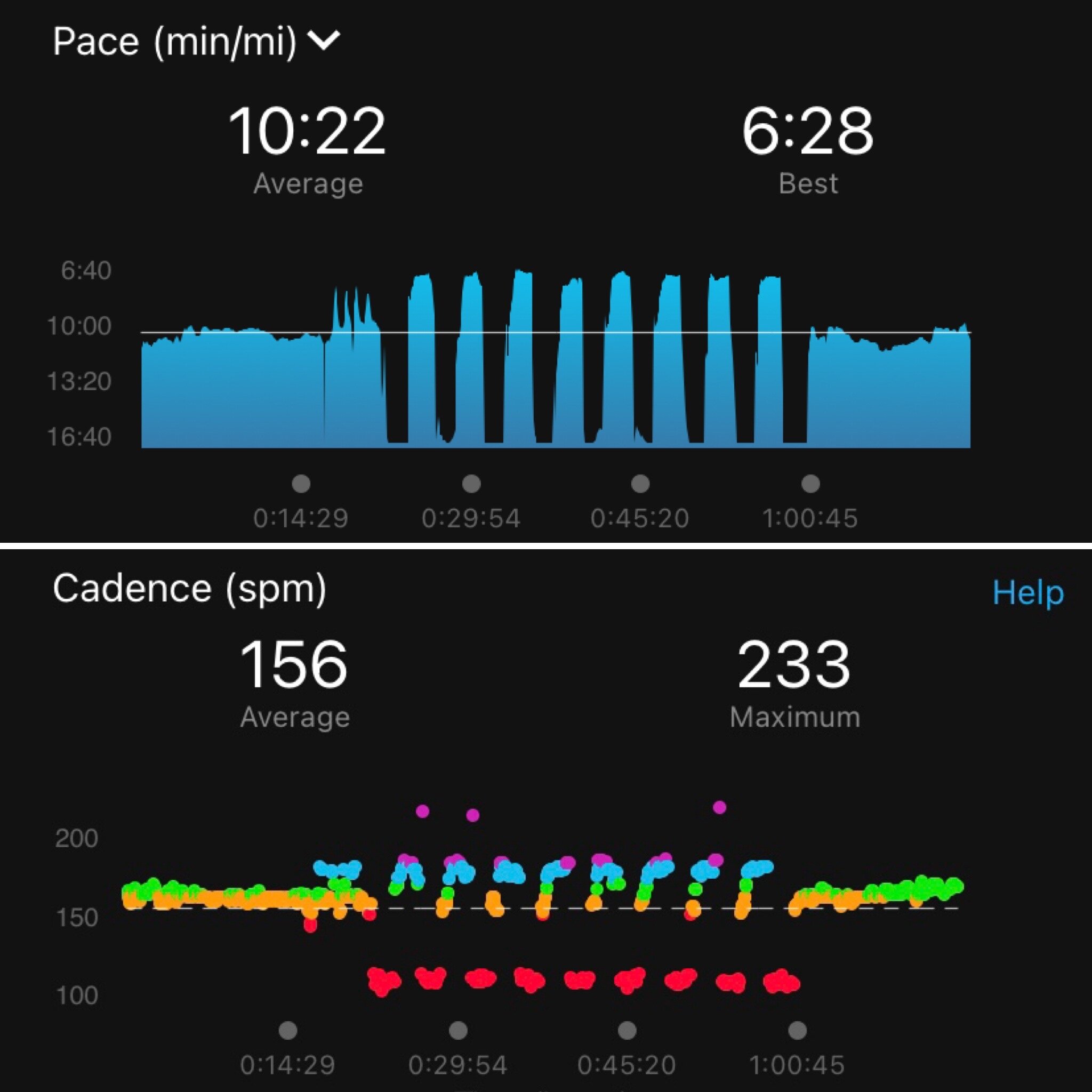Cadence & Speed: Take More Steps to Run Faster
Cadence simply means “steps per minute” (spm).
You may have heard that for runners, the gold standard is 180 steps per minute. But there’s no need to aim for that if your cadence is different. Cadence varies quite a bit from person to person and at different speeds. In fact, cadence is directly related to running speed, and by intentionally taking more steps (increasing our cadence) we will naturally speed up.
Sometimes cadence is manipulated to help runners shorten their stride. Over-striding is inefficient and can lead to injury, but that’s not the topic of this article. Please read 2 Tips for Great Running Form for more info on this.
Our running speed is a result of:
1) The force we apply to the ground with each step we take.
2) How many steps we take.
When we want to run faster, our bodies naturally increase cadence, force & stride length - often without a conscious thought.
Speed ↑ Cadence ↑ Force ↑ Stride Length ↑
Cadence & Speed are directly related to each other.
Consider the data shown in the image above. The runner did an easy warmup jog, 4 strides, 8 fast intervals with walking breaks, and an easy cool down jog.
Cadence was not a focus. The runner simply executed the assigned workout, but their cadence clearly changed when the paces changed.
Manipulating the Speed Factors
Although cadence, force applied, and stride length all increase subconsciously when running faster, we can also intentionally manipulate them.
Force applied can be improved through strength training and plyometrics. Read more in this article: Get Faster Without Running More.
Cadence can be manipulated simply by intentionally taking faster steps. A helpful cue can be to pump the arms a bit faster, because the legs will fall into sync with the arms. Metronome apps and song playlists (where bpm = goal spm) are also effective tools to practice increased cadence.
Air Time
Stride length is not a good focus for running faster. While stride length does increase as a result of force increase, a runner should never try to “reach” with their legs or take bigger strides to run faster. This is because really long strides = lots of time in the air.
Very long strides = too much time in the air.
We cannot do anything to control our speed while we are in the air because we aren't interacting with the ground. If we intentionally take quicker steps, we are forcing ground contact to happen more frequently. Every time we contact the ground we have the opportunity to apply force into the ground and push ourselves forward, running faster.
More Steps to Run Faster
Consider two runners who apply the same amount of force into the ground with every step. If these two runners are in a race, who will win? The one who takes more steps. Though the force applied is the same, the runner who can apply that force more frequently will reach the finish line first.
Try It
Manipulating our natural cadence for general training runs and workouts takes a lot of focus and effort, and usually it isn’t necessary. However, increasing cadence is a helpful cue to finish strong at the end a hard workout or race. Try taking quicker steps (or pumping the arms faster, and the legs will follow) when you’re feeling very tired to help you find your speed.
For runners who enjoy listening to music on long runs, I recommend choosing a song with bpm higher than your normal easy run cadence (spm) for the end of the run. (Not the entire run!) Play the song, run to the beat and see how your pace changes.
Nicole Sifuentes is a full-time Running Coach for adults of all ages and abilities. She is a former professional runner and 2-time Olympian, and Certified Strength and Conditioning Specialist. Read more about her services, and schedule your free coaching consultation.


